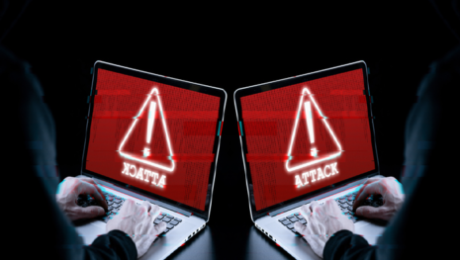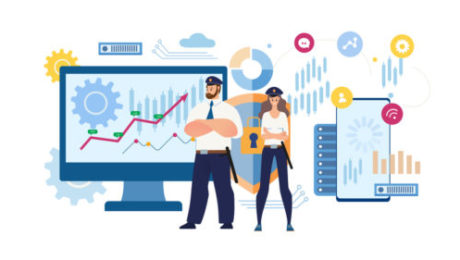Understanding And Preventing High Blood Pressure
This article is from RISQ Consulting’s Zywave client portal, a resource available to all RISQ Consulting clients. Please contact your Benefits Consultant or Account Executive for more information or for help setting up your own login.

High blood pressure (or hypertension) is a common but often underestimated health condition affecting millions of people. In fact, the American Heart Association (AHA) reports that nearly half of American adults (48%) have high blood pressure—and only 1 in 4 have their condition under control. This condition puts individuals at risk for heart disease and stroke, which are leading causes of death in the United States.
High blood pressure is a serious medical condition that, if left uncontrolled, can lead to severe complications such as heart disease, stroke and kidney problems. Understanding this condition, its prevalence, risk factors, prevention and management is crucial for maintaining good health.
This article highlights the basics of high blood pressure and tips for prevention and management.
Blood Pressure Overview
Blood pressure is the force exerted by the blood against the walls of the arteries as it is pumped through the body by the heart. It’s typically expressed in two numbers: systolic pressure (the top number) and diastolic pressure (the bottom number). Systolic pressure measures the pressure in the arteries when the heart beats, while diastolic pressure measures the pressure when the heart is at rest between beats. The AHA considers a normal blood pressure reading to be 120/80 millimeters of mercury (mm Hg).
It’s considered high once the blood pressure reading reaches 130/80 mm Hg or above. High blood pressure occurs when the force of the blood against the artery walls is consistently too high, which means the heart and arteries have to work harder than usual. As a result, this condition can damage arteries and increase the risk of serious health problems.
Symptoms
High blood pressure is often referred to as the “silent killer” because it rarely exhibits noticeable symptoms until it reaches a dangerous level. The only way to know whether someone has high blood pressure is by measuring it.
Risk Factors
Several factors increase the risk of developing high blood pressure. Factors that can’t be changed or are difficult to control include:
- Gender (men are more likely to have high blood pressure than women)
- Race/ethnicity (Black adults are more likely to develop this condition)
- Increasing age
- Family history of high blood pressure
- Chronic kidney disease
- Obstructive sleep apnea
Fortunately, some risk factors can be improved or treated, including:
- Being overweight or obese
- Cigarette smoking and exposure to secondhand smoke
- Diabetes
- High cholesterol
- Physical inactivity
- Poor diet that is high in sodium, low in potassium and includes excessive alcohol
Prevention and Management
The good news is that high blood pressure is often preventable and manageable. Consider these tips:
- Adopt a healthy lifestyle. Healthy living includes a balanced diet low in sodium, rich in fruits and vegetables, and low in saturated and trans fats. Engage in regular physical activity, aim for a healthy weight, and avoid smoking and excessive alcohol consumption.
- Limit alcohol. The AHA recommends limiting consumption to no more than two drinks per day for men and one for women.
- Be physically active. Strive to get at least 150 minutes of moderate-intensity physical activity per week, such as brisk walking.
- Reach and maintain a healthy weight. A health care professional can suggest healthy approaches for losing and maintaining weight. For example, they can help you determine how many calories you need for weight loss and advise you on the best activities.
- Get regular checkups. Visit your health care provider regularly for blood pressure checks and follow their recommendations.
- Take medication as prescribed. If lifestyle changes alone are insufficient to control your blood pressure, your doctor may prescribe medication. It’s essential to take prescribed medications as directed.
- Manage stress. Practice stress-reduction techniques such as meditation, yoga or deep breathing exercises to help lower stress, which can contribute to high blood pressure.
- Monitor blood pressure levels. If you have high blood pressure, monitoring your blood pressure at home can help you and your health care provider track your progress and make necessary adjustments to your treatment plan.
It comes down to knowing what your blood pressure should be and trying to keep it at that level. Your doctor can answer any blood pressure questions.
Summary
High blood pressure is a common but potentially serious health condition that affects a significant portion of the U.S. population. Understanding this condition is essential for maintaining good health. By adopting a healthy lifestyle, prioritizing routine health care and following medical advice, individuals can take control of their blood pressure and reduce the risk of developing high blood pressure and associated complications.
Contact a health care professional for a blood pressure reading and to discuss any risk factors or concerns.
- Published in Blog
Mental Health Minute
This article is from RISQ Consulting’s Zywave client portal, a resource available to all RISQ Consulting clients. Please contact your Benefits Consultant or Account Executive for more information or for help setting up your own login.

Stress and anxiety is bound to creep into your life no matter the mitigation. When it does, you can prepare yourself with simple and quick techniques to sooth the impact and recover quicker.
How Can Grounding Techniques Help Manage Feelings?
Grounding is a practice that can help you manage experiences such as flashbacks, unwanted memories or negative emotions. These techniques involve focusing on the present to distract yourself from anxiety and other challenging emotions.
Physical Grounding Techniques
Physically grounding yourself involves using your senses to help you navigate feelings of distress. A technique to physically ground yourself is to put your hands in water and focus on the temperature of the liquid or switch from cold water to warm water and back while focusing on the present moment.
Other physical grounding exercises include deep breathing, savoring food or drink, picking up nearby objects and moving your body (e.g., walking, running in place or doing jumping jacks).
Mental Grounding Techniques
You can mentally ground yourself with exercises that prevent mental distractions and help redirect your thoughts to the present.
Such exercises include memory games, category-thinking (e.g., listing all the types of cake you can think of), reciting a song or book passage you know by heart, and visualizing a daily task you enjoy.
Soothing Grounding Techniques
Soothing techniques can be used to comfort yourself in times of high anxiety or distress. These techniques are intended to promote good feelings that reduce or distract from negative emotions.
You can practice soothing techniques by picturing the face of someone you love, repeating compassionate phrases about yourself, spending time with your pet, visualizing your favorite place or listing positive things.
Conclusion
Grounding techniques can help you manage unpleasant experiences like distress, anxiety, traumatic nightmares and flashbacks. Try these exercises to reduce distress when you first start to feel negative emotions.
Try These Mood-boosting Activities
Negative emotions and disappointments can easily derail your activities. Although it’s common to be in a bad mood occasionally, letting negative emotions take over your day can leave you feeling worse. Instead of ignoring a bad mood, try a mood-boosting activity.
Free Mood-boosters
- Walking outdoors is a great activity for improving your mood. Spending time outdoors and being in sunlight have both been proven to boost mood. Additionally, walking can release endorphins, which ease stress and discomfort.
- Find ways to laugh, such as watching funny videos, sharing jokes with a friend, going online or watching comedians.
- Try aromatherapy to de-stress. Smells can trigger positive memories and help relieve anxiety or stress. Find your favorite scented soap, smell something that reminds you of a loved one or sample a new essential oil.
- Play cheerful and upbeat music. This can help boost your mood, ease tension, reduce anxiety and even improve certain brain functions, such as memory.
- Do something nice for somebody else, such as a co-worker or friend. Being compassionate to others can make them feel better and may improve your mood as well. Consider small favors, such as doing chores for your housemate or partner, walking a neighbor’s dog or helping a stranger with their groceries.
- Talk to people in your life who uplift you. A short call or time spent with a loved one can help you reduce tension. As a bonus, your loved one may be able to make you laugh, take your mind off your troubles or remind you that you’re not alone.
Conclusion
The next time you’re in a bad mood, try one of these free mood-boosting activities to reduce stress and lessen the impact of negative emotions.
- Published in Blog
Protecting Your Business From Power Surges
This article is from RISQ Consulting’s Zywave client portal, a resource available to all RISQ Consulting clients. Please contact your Benefits Consultant or Account Executive for more information or for help setting up your own login.

Power surges, which are sudden spikes in electrical voltage, can wreak havoc on business equipment and systems. While they may seem like minor inconveniences, power surges can have a significant impact on a business’s bottom line. This article explores the dangers of power surges, effective strategies to shield businesses from their effects and the crucial role of insurance in safeguarding their assets.
What Causes a Power Surge?
A power surge happens when there’s a sudden increase in electrical voltage in a building’s electrical system or the electrical grid. These voltage spikes are caused by different factors, like lightning strikes that discharge massive amounts of electricity into the grid or directly into buildings. Electrical grid fluctuations, such as changes in demand or power line switching, can also cause surges. Internally, power surges can happen when there’s faulty wiring, malfunctioning appliances, or when power-hungry equipment like heating, ventilating and air conditioning systems and large motors start up. These surges can spread throughout the electrical system, potentially damaging connected devices and equipment.
Identifying the various sources of power surges is important to ensure effective surge protection in commercial settings.
The Impact of Power Surges on Business Operations
The impact of power surges on business operations can be substantial and far-reaching. Financially, power surges can lead to extensive costs, including equipment damage or replacement expenses and downtime, resulting in lost productivity and revenue. Beyond the financial implications, surges can inflict reputational damage on a business, eroding customer trust and partnerships due to frequent disruptions and equipment failures. In essence, power surges have the potential to disrupt normal business operations, strain resources and harm a company’s reputation, making them a critical concern for businesses of all sizes and industries.
Strategies to Protect Against Power Surges
To protect against power surges, businesses can utilize the following effective strategies and tools:
- Surge protection devices (SPDs)—These devices should be installed at critical points in the electrical system to divert excess voltage away from sensitive equipment and prevent damage. It’s advisable to install SPDs throughout different areas of a building. The three primary zones for protection are service entrance SPDs, distribution panel SPDs and point-of-use SPDs. Service entrance SPDs prevent surges from entering the building, while distribution panel SPDs limit the spread of surges to downstream areas. Point-of-use SPDs offer targeted protection for specific assets.
SPD installation should comply with the manufacturer’s recommendations. SPDs need to be properly sized and grounded to protect equipment.
- Uninterruptible power supply (UPS)—A UPS is a type of device that powers equipment nearly instantaneously in the event of grid power failure, protecting the equipment from damage. Implementing a UPS can provide a temporary power source during surges or outages, allowing for safe equipment shutdown.
- Grounding and bonding—Proper grounding and bonding of the electrical system can reduce the risk of surges caused by electrical faults.
- Regular electrical maintenance—Regular inspections and maintenance can help identify and address potential issues before they lead to surges.
- Employee training and awareness—Educating employees about power surge risks and establishing protocols for immediate response can minimize damage and downtime in the event of a surge.
By adopting these strategies and tools, businesses can significantly enhance their protection against power surges and avoid potential financial and operational disruptions.
The Role of Commercial Property Insurance
Even though preventive measures are essential, power surges can occur unexpectedly, and accidents can happen. However, there is good news for businesses. Commercial property insurance policies and appropriate endorsements can help cover the financial losses that result from power surges. Here are some of the benefits of such coverage:
- Equipment replacement coverage—Insurance can cover the cost of repairing or replacing damaged equipment.
- Business interruption coverage—If power surges cause downtime, insurance may compensate a business for lost income during that period.
- Spoiled inventory coverage—Insurance may cover the cost of spoiled inventory that results from power outages.
Conclusion
To ensure smooth operations, businesses should take proactive measures to protect against power surges. This can be achieved by implementing surge protection strategies and acquiring the appropriate insurance. By doing so, businesses can safeguard their assets and maintain productivity even when faced with power surges.
Contact us today for additional guidance on commercial property risks.
- Published in Blog
Nonprofit Sector Trends to Watch
This article is from RISQ Consulting’s Zywave client portal, a resource available to all RISQ Consulting clients. Please contact your Benefits Consultant or Account Executive for more information or for help setting up your own login.

Nonprofit organizations operate to fulfill their missions, benefit the community and serve the public. They are essential for maintaining a thriving society and contribute greatly to health care, higher education, environmental stewardship, human services, religious services, arts and culture, and other vital services.
However, in the months and years ahead, the nonprofit sector could face several challenges posed by industry trends, including economic uncertainty, labor shortages and heightened cybersecurity risks. These factors may lead to a drop in fundraising and rising operational costs.
As such, it’s important for nonprofit organizations to closely monitor these sector concerns and adjust their risk management practices as needed. This article provides more information on nonprofit sector trends to watch.
Economic/Recession Concerns
Numerous nonprofit organizations—especially those in the health and human services sector—experienced an increased demand for their services during the COVID-19 pandemic and may have seen an accompanying surge in federal funding and private donations. However, federal support and other funding streams appear to be tapering off due to concerns about an impending recession and high inflation.
Many economists and business analysts agree that a recession is likely to happen within the next year. As a result, many organizations will be challenged with changing consumer behaviors, increased costs, labor market changes and increased reputational risk. For nonprofit organizations specifically, economic downturns often result in a decline in private contributions from individual, corporate and foundation donors, decreased funding from the government and reduced endowments.
Data from the Chronicle of Philanthropy found that the recent significant reduction in donations may signal serious financial trouble for nonprofit organizations as the recession hits. According to the report, donor numbers fell 7% in the first half of 2022 compared to the first half of 2021, with the number of people making contributions of $100 or less dropping more than 17%. In fact, nonprofits are experiencing compounding donor loss each quarter, and the most significant concern these organizations face is an uncertain economic year.
Since U.S. nonprofit organizations are valuable contributors to society and the economy in general, it’s important they focus on innovative solutions and effective risk management to ensure short-term survival as the economic downturn leads to a loss of funding. Best practices include diversifying funding sources, aligning with partners across the nonprofit sector to maximize the pool of potential donors and developing a communication strategy to reach target audiences.
Labor Shortages
The nonprofit sector has the third-largest workforce in the United States, employing over 12 million people. However, employment fell by 1.6 million during the pandemic and decreased even more during the Great Resignation—an unprecedented mass exit from the workforce spurred by the pandemic. As a result, a tight labor market and a shrinking pool of workers have increased talent competition, leaving many nonprofit organizations understaffed. Since these organizations may struggle to offer competitive salaries and benefits, they often lose employees and candidates to better-paying jobs elsewhere. Even volunteerism remains below pre-pandemic levels—dropping 7% between 2019 and 2021, according to a U.S. Census Bureau and AmeriCorps survey—as people continue to worry about their health, vaccine protocols and sanitation practices.
Inadequate staffing at some nonprofit organizations may lead to delays or a complete loss of needed services, causing the communities they serve to suffer. A survey from the National Council of Nonprofits found that 26% of nonprofit organizations have a waitlist more than a month long, and 21% don’t even have a waitlist because they are currently unable to accept new clients. In addition to issues with providing services, inadequate staffing can lead to financial instability, damaged reputations, data breaches, insufficiently trained staff and board member liability issues.
To attract and retain staff, some nonprofits have started to offer better pay and benefits as well as improved workplace advancement opportunities and flexibility. Many nonprofits are also making an effort to increase the diversity of leadership and staff, which can have a positive impact on employee and client relationships and help attract and retain top talent. Nonprofit insurance coverage—including general liability insurance, commercial property insurance and business income insurance—can also help organizations ensure the continued protection of people and assets while they fulfill their missions.
Heightened Cybersecurity Risks
Cybersecurity risks are becoming increasingly severe, targeted and frequent across all sectors. However, nonprofits are particularly at risk since many organizations don’t have the funding to implement adequate cybersecurity protocols. In addition, nonprofits often collect and store highly valuable information about their clients, donors and employees, making them a prime target for cybercriminals. The shift to remote work during the COVID-19 pandemic also significantly increased exposure to data breaches and cyberattacks for several reasons, including expanded attack surfaces, less oversight by security staff and unsecured hardware and networks.
Unfortunately, the way many nonprofit organizations conduct business makes them vulnerable to cyberattacks. For example, while technology has made it easier to accept donations online, it has also made it easier for cybercriminals to steal from them, especially if the website is unsecured. Technology has also allowed for simpler communication processes, but clicking a bad link, downloading a file or opening a malicious PDF can result in a cybersecurity incident with potentially devastating consequences. And while volunteers may have good intentions for volunteering their time, there may be cybercriminals who slip through quick onboarding processes and leave organizations at risk of a cyberattack.
Since nonprofit organizations tend to operate on a limited budget, investing in robust cybersecurity measures or recovering from a data breach may be more difficult than it is for other organizations. However, many cyberattacks can be prevented by locking down the digital donation system, securing email communications, and obtaining a criminal background check on all staff and volunteers.
Conclusion
Overall, there are several trends currently impacting the nonprofit sector. By staying on top of these developments and taking steps to mitigate their associated exposures, nonprofit organizations can effectively position themselves to maintain long-term growth and operational success.
For additional, industry-specific risk management guidance, contact us today.
- Published in Blog
Credential Stuffing
This article is from RISQ Consulting’s Zywave client portal, a resource available to all RISQ Consulting clients. Please contact your Benefits Consultant or Account Executive for more information or for help setting up your own login.

If and when you get hacked, it’s easy to think cyber criminals used some high-tech program or code to gain access to your accounts. The truth is, however, that data breaches aren’t always this sophisticated, and all malicious parties need is a little trial and error to steal your personally identifiable information. This tactic is known as credential stuffing, and it’s becoming a common tool for cyber criminals of all kinds.
Simply put, credential stuffing attacks are when a malicious party takes a stolen username and password and tries it on a variety of different websites. For example, a hacker may have purchased your Google username and password from the dark web.
Assuming that you use the same password for multiple accounts, the hacker would test these credentials on other platforms (e.g., banking or social media websites) using botnets (groups of computers tasked with various commands). Essentially, by using information from one account, criminals can potentially access data from a variety of platforms, draining bank accounts or gathering information they can sell to other malicious parties.
Credential stuffing can affect everyone, from individual users to the biggest companies. In fact, a Yahoo breach that impacted approximately 500 million users was largely carried out using credential stuffing.
Thankfully, because credential stuffing relies on victims having the same password for multiple accounts, there are some simple ways to protect yourself:
- Avoid using the same password for multiple accounts—Credential stuffing works because many users use the same password for multiple accounts. Be sure to change your passwords often and never use the same password across different accounts.
- Use two-factor authentication—While complex passwords can deter cyber criminals, they can still be cracked. To prevent cyber criminals from gaining access to your accounts, two-factor authentication is key. Through this method, users must confirm their identity by providing extra information (e.g., a phone number or unique security code) when attempting to access corporate or personal applications, networks and servers. This additional login hurdle means that would-be cyber criminals won’t easily unlock an account, even if they have the password in hand.
- Create strong password policies—For employers, ongoing password management can help prevent attackers from compromising your organization’s password-protected information. You’ll want to create a password policy that requires employees to change their password on a regular basis, avoid using the same password for multiple accounts and use special characters. Long passphrases are becoming increasingly popular as well, and may be a good option for your organization.
- Provide security training—Even the most robust and expensive data protection solutions can be compromised should an employee click a malicious link or download fraudulent software. As such, it’s critical for organizations to thoroughly train personnel on common cyber threats and how to respond. Your employees should also know your cyber security policies and know how to report suspicious activity.
For additional cyber risk management guidance and insurance solutions, contact us today.
- Published in Blog
Patch Management Explained
This article is from RISQ Consulting’s Zywave client portal, a resource available to all RISQ Consulting clients. Please contact your Benefits Consultant or Account Executive for more information or for help setting up your own login.

Patch management is the process of acquiring and applying software updates to a variety of endpoints, including mobile devices, computers, servers and embedded devices. Installing patches regularly is necessary to correct errors, help protect data and optimize system functions. This article provides information on how a consistent approach to patching and updating software can limit exposure to various exploits.
What Are Patches?
Patches modify operating systems and software to improve security, fix bugs and improve performance. They are created by software developers and address vulnerabilities attackers may target.
Why Is Patch Management Necessary?
Patch management is necessary for the following reasons:
- Security—Hackers look to exploit cybersecurity weaknesses. Installing patches fixes software vulnerabilities and therefore reduces an organization’s cybersecurity risks.
- Compliance—Regulatory bodies or government agencies may require organizations to adhere to patch management standards. Meetings those requirements can help businesses avoid sanctions, fines or penalties.
- Feature improvements—In addition to addressing security issues and fixing bugs, patches can also offer feature and functionality improvements to help software run smoothly.
- Minimize downtime—With the enhancements that patches provide, programs may run more efficiently. This can increase production by helping minimize downtime and improving the user experience.
How Is Patch Management Performed?
The patch management process can be carried out by a company’s IT team, an automated patch management tool or a combination of both. Steps in the patch management process include:
- Identifying IT assets (inventory) and their locations—Taking stock of IT assets and where they are located is a crucial first step in the patch management process. This is especially important as employees increasingly work remotely.
- Identifying critical systems and vulnerabilities—Being aware of critical systems and identifying and tracking vulnerabilities are also key aspects of patch management. It is important to take note of existing security features (e.g., firewalls and antivirus software) and what they are protecting against. With this information, an IT team can more readily determine which systems need to be patched when vulnerabilities are discovered or reported.
- Testing and applying patches—Before applying the patches to all systems, it is best to test them on a representative subset of IT inventory. This can help ensure the updates will not create unforeseen issues. Once testing is complete, begin rolling out the patches to the rest of the assets. It is advisable to do this in batches, as this can help identify potential issues before they become too widespread.
- Tracking progress and maintaining records—During the rollout, it is advisable to keep track of the progress being made. After the patches have been successfully installed, it is essential to keep accurate documentation that notes which assets have been updated.
Conclusion
Having a comprehensive patch management process not only increases a company’s cybersecurity posture and helps keep the business running smoothly, but it also is a practice frequently required by insurance underwriters in order to obtain cyber insurance. Contact us today for more information.
- Published in Blog
Double Extortion Ransomware Attacks
This article is from RISQ Consulting’s Zywave client portal, a resource available to all RISQ Consulting clients. Please contact your Benefits Consultant or Account Executive for more information or for help setting up your own login.

In recent years, ransomware attacks have steadily been on the rise. These incidents—which entail cybercriminals compromising a device or server and demanding a large payment be made before restoring the technology (as well as any data stored on it) for the victim—are one of the most damaging cyberattack methods, incurring an average of $1 million in total losses per incident.
As these attacks become increasingly common, numerous ransomware techniques have also emerged. Specifically, double extortion ransomware attacks are now a potential cybersecurity concern for organizations across industry lines. This technique follows a similar protocol to that of a typical ransomware attack, but comes with an extra threat—the victim must pay a ransom not only to regain access to their technology and data, but also to keep that data from being uploaded publicly online.
Double extortion ransomware attacks are particularly concerning, seeing as these incidents can further pressure organizations to comply with ransom demands in order to keep their data private. Review the following guidance to learn more about how double extortion ransomware attacks work and what your organization can do to prevent such an attack.
How Double Extortion Ransomware Attacks Work
To outline the general framework of a double extortion ransomware attack, this technique starts out like most other ransomware incidents, in which a cybercriminal first gains access to their target’s device or server—often via phishing scams, nonsecure websites or malicious attachments. From there, the cybercriminal is able to compromise the victim’s technology and encrypt data stored on it. Then, the cybercriminal delivers their ransom demand and accompanying consequences for noncompliance.
Contrary to a typical ransomware incident, however, these consequences are twofold. That is, failing to pay the ransom could result in the cybercriminal both permanently restricting the victim’s access to their technology and sensitive data, as well as sharing this data publicly on the internet. Although double extortion ransomware attacks can occur at any organization, these incidents are most common within establishments that store a considerable amount of sensitive data. This includes health care facilities, financial institutions, government organizations and large retail businesses.
Double extortion ransomware attacks can be significantly more damaging for affected organizations than typical ransomware incidents. This is because even if organizations have protocols in place (e.g., storing data in multiple secure locations) that allow them to recover their compromised information without paying a ransom, they may still be pressured to do so in order to keep their data from going public. After all, a data breach can lead to further ramifications—including reputational damages, regulatory fines and class action lawsuits.
What’s more, cybercriminals who conduct double extortion ransomware attacks are known to demand higher ransom payments, sell or trade stolen data to other attackers for future extortion attempts and still move forward with sharing data publicly even after the ransom is paid (whether on purpose or by accident)—making these attacks all the more damaging.
Preventing Double Extortion Ransomware Attacks
When it comes to combatting double extortion ransomware attacks, it’s important to prioritize standard ransomware prevention measures. This includes conducting routine employee training on how to detect potential ransomware risks (e.g., suspicious emails or attachments), implementing policies that prohibit browsing nonsecure websites on organizational servers or devices, and installing adequate security features on all workplace technology (e.g., a virtual private network, antivirus programs, data encryption software, email spam filters, an internet firewall and a patch management system).
In addition to these key prevention measures, the best course of action for reducing double extortion ransomware attack risks is to establish an effective cyber incident response plan for your organization. This plan should explicitly address double extortion ransomware attack scenarios and outline steps that employees should take to limit the damages during such an event.
Lastly, it’s vital to secure appropriate insurance coverage for ultimate peace of mind in the event of a ransomware attack. A dedicated cyber insurance policy can offer much-needed support and resources when an attack occurs, minimizing the potential damages and financial impact on your organization.
For additional risk management guidance and insurance solutions, contact us today.
- Published in Blog
Creating a Cybersecurity Culture
This article is from RISQ Consulting’s Zywave client portal, a resource available to all RISQ Consulting clients. Please contact your Benefits Consultant or Account Executive for more information or for help setting up your own login.

Employees are an organization’s first line of defense against cybercriminals. For this reason, they are also commonly targeted. In fact, the vast majority (88%) of data breaches are caused by employee mistakes, according to Stanford University. Unfortunately for organizations, a single mistake can result in costly losses, reputational damage and lost or stolen data.
In order to keep your organization safe from cybercriminals, cybersecurity must become an integral part of company culture—something that is valued and upheld by every member of the organization. Cybersecurity should be top of mind for every employee when choosing whether to click a link, open an email or download documents from the web.
This article contains tips for improving employee engagement and creating a cybersecurity culture that will help protect your organization against cybercriminals.
Cybersecurity Culture Explained
An organization’s security culture will not grow on its own. To transform security training into everyday practices, organizations must invest in their security culture and constantly nurture it. A strong and resilient cybersecurity culture can benefit an organization in a number of ways, including:
- Protects the organization against cyberthreats and data breaches
- Strengthens customer trust and loyalty
- Improves brand reputation
Although many organizations recognize the benefits of having a cybersecurity culture, they may fail to successfully create one for multiple reasons. One of the most common reasons is a lack of employee buy-in. In fact, one survey found that 60% of organizations don’t believe they have successfully achieved employee buy-in for cybersecurity practices. Lack of executive buy-in is also a common cause of failure. This may result from outdated thinking that cybersecurity only belongs to the IT department or a lack of understanding about the pervasiveness of the issue.
Fortunately for organizations, the main stumbling blocks to creating a thriving cybersecurity culture can also guarantee success if leveraged effectively.
Best Practices
When cultivating a cybersecurity culture, organizations should consider the following best practices:
- Engage the C-suite. Senior executives are sometimes resistant to adopting good cyber hygiene. This has to change if your organization is going to create a successful cybersecurity culture. Employees need to see management leading by example if they’re going to buy into a healthy cybersecurity culture. Encourage leaders to join the conversation and reinforce that cybersecurity is every employee’s responsibility.
Additionally, senior executives are one of the biggest targets for cybercriminals. Ensure they are doing their part in upholding cybersecurity values by teaching them how to identify and defend against targeted cyberattacks.
- Inspire ownership of cybersecurity. Clearly communicate what’s at stake to your employees and explain that your organization needs their help. It’s not enough to simply explain changes to security protocols. Ensure employees understand why these changes have been made and what you’re trying to do to protect the organization. It’s imperative that employees understand that no security system is foolproof and, therefore, it’s up to them to minimize threats and avoid unnecessary risks.
- Create engaging cybersecurity programs. Cybersecurity training should not be presented as a one-off occurrence. If you want your employees to embrace cybersecurity as part of their culture, provide fun training based on real experiences. Consider leveraging discussion forums, online games, in-person training and mock phishing exams as part of your holistic approach to cybersecurity learning. Brief and frequent lessons will also be more digestible and remind employees that cyber awareness is part of their corporate life.
- Bring back the basics. When discussing cybersecurity, many organizations make the mistake of skipping basic training. This can cause confusion and prevent core cybersecurity values from resonating with employees. According to one survey, 50% of all employees haven’t had formal cybersecurity training, and 96% keep passwords saved on their devices for easy access. When creating and teaching good cyber hygiene, don’t forget basic principles such as strong password policies, two-factor authentication and limits on security, downloads and network access.
- Make it easy. Ensure employees know where to report suspicious emails and how to check the authenticity of work-related communications. Whenever possible, encourage open lines of communication between your employees and the IT department. This will help encourage employees to proactively reach out to IT for help or to report mistakes.
- Celebrate success. Make cybersecurity part of performance reviews and reward systems. It is also beneficial to acknowledge employee successes one-on-one by expressing appreciation or offering rewards for their commitment to your organization’s cybersecurity goals.
Conclusion
When workplace cybersecurity is treated as a simple check-the-box exercise, costly mistakes can occur. Teaching employees to value and take responsibility for their actions can help organizations reduce their chances of becoming a victim of a cyberattack.
Contact us today for more cyber guidance.
- Published in Blog
General Cybersecurity Best Practices for Modern Vehicles
This article is from RISQ Consulting’s Zywave client portal, a resource available to all RISQ Consulting clients. Please contact your Benefits Consultant or Account Executive for more information or for help setting up your own login.

Modern vehicle technology has transformed in the past several years as autonomous driving, vehicle electrification and car connectivity features have become more common. While these digital innovations in the automotive industry have added significant customer value, they have also exposed vehicles to cybercriminals attempting to gain access to critical in-vehicle electronic units and data. This article discusses cybersecurity threats modern vehicles face, the importance of the automotive industry providing protections against those risks and best practices for minimizing cybersecurity threats.
Cybersecurity Threats in Modern Vehicles
These days, vehicles are becoming increasingly dependent on connectivity and technology that runs complex software. There are about 100 million lines of software code in today’s vehicles, and by 2030, they’re expected to have roughly 300 million. The overabundance of complex software code within vehicles offers ample opportunity for cyberattacks.
Cyberattacks on modern vehicles could endanger vehicle inhabitants and others, and they may also be used to track vehicles or related data. Hackers can accomplish these attacks through physical or remote avenues:
- Physical access—When hackers gain physical access to a vehicle’s internal communication system, they can affect vehicle operations, such as steering, acceleration and braking.
- Remote access—Modern vehicles utilize Bluetooth technology, remote start applications and GPSs. Once hackers gain remote access, they can transfer knowledge from computers to vehicles and vice versa.
Importance of Cybersecurity in Modern Vehicles
While in-car cybersecurity threats are still relatively new, they are an ongoing concern. It is now the responsibility of automakers to consider cybersecurity an integral part of their core business functions and development efforts. Systems and components that govern vehicle safety features must be protected from harmful attacks, unauthorized access, damage or other threats that might interfere with safety functions.
Best Practices
A layered approach to vehicle cybersecurity can help reduce the probability of an attack’s success and mitigate the ramifications of unauthorized system access. The following are general best practices for modern vehicle cybersecurity:
- Leadership priority on product security—An emphasis on mitigating cybersecurity challenges associated with motor vehicles and motor vehicle equipment should be a priority for automotive industry suppliers and manufacturers. By stressing the importance of cybersecurity from the leadership level down to the staff level, corporations can emphasize the seriousness of managing cybersecurity risks and prioritize cybersecurity throughout the product development process.
- Vehicle development process with explicit cybersecurity considerations—The entire lifecycle of a vehicle—conception, design, manufacture, sale, use, maintenance, resale and decommission—should be taken into consideration when addressing cybersecurity risks, especially since there is more flexibility to design and implement protective measures early in the development process.
- Information sharing—In late 2014, the National Highway Traffic Safety Administration (NHTSA) encouraged the automotive industry to establish Auto-ISAC, an industry-driven community for sharing and analyzing intelligence about emerging cybersecurity risks to vehicles. Vehicle manufacturers, automotive equipment suppliers, software developers, communication services providers, aftermarket system suppliers and fleet managers are strongly encouraged to join Auto-ISAC and share timely information concerning cybersecurity issues.
- Security vulnerability reporting program—Members of the automotive industry should make information reporting easy for the security research community and the general public to help identify cybersecurity vulnerabilities.
- Organizational incident response process—While it’s not possible to predict all future attacks, organizations can prepare their responses, processes and staff to handle incidents effectively. Organizations should develop a product cybersecurity response process that includes:
- A documented incident response plan
- Roles and responsibilities that are clearly identified within the organization
- Communication channels and contacts outside of the organization that are clearly identified
- Procedures for keeping information up to date
- Self-auditing—To establish a clear and controlled process for managing software and related vulnerability risks, organizations must ensure documentation and document controls are in place. For process management documentation, members of the automotive industry should:
- Document the details related to their vehicle cybersecurity risk management process
- Retain documents through the expected lifespan of the associated part
- Implement and follow a control protocol
To assist companies in better understanding their cybersecurity practices and how to improve them, procedures for internal management and documentation review should also be established.
- Education—Continuous education of existing and future workforces can assist in improving the cybersecurity of motor vehicles. NHTSA encourages vehicle manufacturers, suppliers, universities and other stakeholders to work together to support the educational efforts of the workforce.
- Aftermarket/user-owned devices—Aftermarket devices, such as insurance dongles, and user-owned devices, such as cellphones, could present unique cybersecurity challenges. Before these devices are connected to vehicle systems through interfaces provided by the manufacturer, they should be authenticated and provided with appropriate, limited access.
- Serviceability—The average motor vehicle requires regular maintenance and occasional repair to operate safely. The automotive industry should consider the serviceability of vehicle components and systems since vehicles can remain in use for over a decade.
Conclusion
The automotive industry can work towards protecting electronic systems, communication networks, control algorithms, software, users and underlying data from malicious attacks, damage, unauthorized access or manipulation by implementing cybersecurity best practices. Contact us today for more risk management guidance.
- Published in Blog
- 1
- 2










